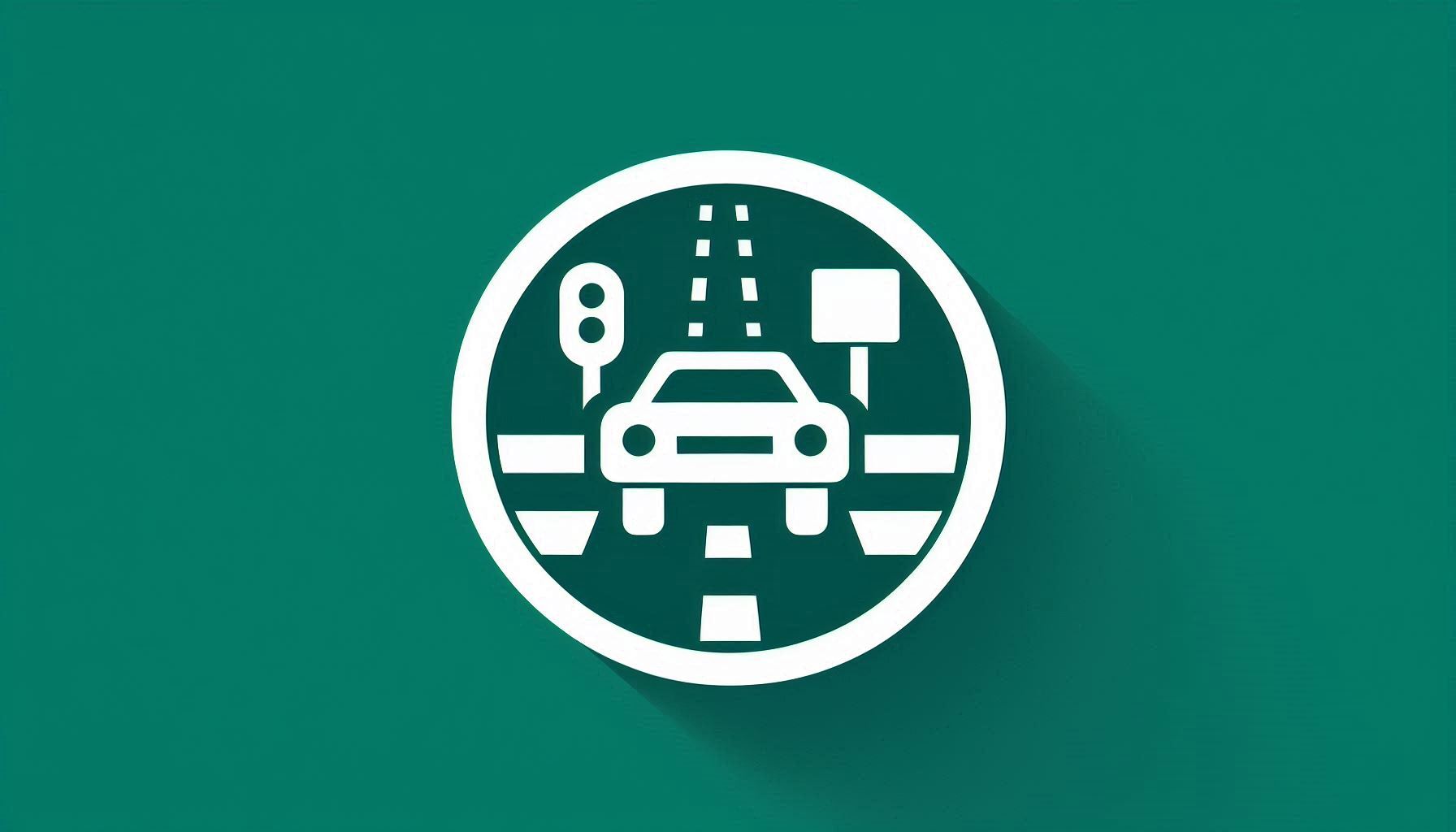Determining Free-Flow Speed on Different Classes of Rural Two-Lane Highways

Downloads
Current analytical free-flow speed models consider all rural two-lane highways as the same road type despite their different functional significance in the network. The aim of this paper is to develop a prediction model for free-flow speed as a function of speed limit and road geometric characteristics for different classes of rural two-lane highways. The research was conducted on 50 representative sections of the two rural classes of two-lane highways equipped with automatic traffic counters in Serbia. In order to develop the appropriate models, it was necessary to determine the threshold values of vehicle time headway in the free-flow for both classes of rural two-lane highways, based on the total number of 191,720 vehicles. The obtained results show that there are differences in the threshold values of free-flow time headway for different road classes. Namely, it was determined that the values of free-flow time headway for Class I amounted to 6.3 s, and for Class II to 8.4 s. The free-flow speed prediction model for different road classes showed that speed limit had the highest impact on free-flow speed for Class I and II highways, followed by horizontal curve radius and shoulder width.
Downloads
HCM. Highway capacity manual. 5th ed. Transportation Research Board, National Research Council, Washington, DC; 2010.
A Policy on geometric design of highways and streets. 5th ed. Washington, DC: American Association of State Highway and Transportation Officials; 2004.
Lobo A, Jacques MAP, Rodrigues CM, Couto A. Free-gap evaluation for two-lane rural highways. Transportation Research Record. 2011;(2223):9–17. DOI: 10.3141/2223-02.
HCM. Highway capacity manual. 6th ed. Transportation Research Board, National Research Council, Washington, DC; 2016.
Goldenbeld C, van Schagen I. The credibility of speed limits on 80 km/h rural roads: The effects of road and person(ality) characteristics. Accident Analysis and Prevention. 2007;39(6):1121–30. DOI: 10.1016/J.AAP.2007.02.012.
HCM. Highway capacity manual. 3rd ed. Transportation Research Board, National Research Council, Washington, DC; 1985.
HCM. Highway Capacity manual. 4th ed. Transportation Research Board, National Research Council, Washington, DC; 2000. p. 1207.
Homburger W, Hall J, Loutzenheiser R, Reilly W. Fundamentals of traffic engineering. 1996.
Mahmud MS, et al. Evaluating the impacts of speed limit increases on rural two-lane highways using quantile regression. Transportation Research Record. 2021;2675(11):740–753. DOI: 10.1177/03611981211019732.
Fitzpatrick K, et al. Speed prediction for two-lane rural highways. FHWA-RD-99. Georgetown Pike: U.S. Department of Transportation - Federal Highway Administration; 2000.
Medina AMF, Tarko AP. Speed factors on two-lane rural highways in free-flow conditions. Transportation Research Record. 2005;(1912):39–46. DOI: 10.1177/0361198105191200105.
Hashim IH. Analysis of speed characteristics for rural two-lane roads: A field study from Minoufiya Governorate, Egypt. Ain Shams Engineering Journal. 2011;2(1):43–52. DOI: 10.1016/J.ASEJ.2011.05.005.
Sekhar CR, et al. Free flow speed analysis of two lane inter urban highways. Transportation Research Procedia. 2016;17:664–673. DOI: 10.1016/J.TRPRO.2016.11.121.
Lamm R, Choueiri EM, Mailaender T. Comparison of operating speeds on dry and wet pavements of two-lane rural highways. Transportation Reseacrh Record. 1990;1280(8):199–207.
Vogel K. What characterizes a “free vehicle” in an urban area? Transportation Research Part F: Traffic Psychology and Behaviour. 2002;5(1):15–29. DOI: 10.1016/S1369-8478(02)00003-7.
Fazio J, Wiesner BN, Deardoff MD. Estimation of free-flow speed. KSCE Journal of Civil Engineering. 2014;18(2):646–50. DOI: 10.1007/S12205-014-0481-7.
Currin TR. Spot speed study in introduction to traffic engineering: A manual for data collection and analysis. Stamford: Wadsworth Group; 2001. p. 4–12.
Robertson HD, et al. Manual of transportation engineering studies. Englewood Cliffs, N.J. Prentice Hall; 1994. Chapter 3-33-51.
Silvano AP, Koutsopoulos HN, Farah H. Free flow speed estimation: A probabilistic, latent approach. Impact of speed limit changes and road characteristics. Transportation Research Part A: Policy and Practice. 2020;138:283–298. DOI: 10.1016/J.TRA.2020.05.024.
Luttinen RT. Statistical analysis of vehicle time headways. Aalto University; 1996.
Lin FB, Su CW, Huang HH. Uniform criteria for level-of-service analysis of freeways. Journal of Transportation Engineering. 1996;122(2):123–129. DOI: 10.1061/(ASCE)0733-947X(1996)122:2(123).
Skszek SL. Actual speeds on the roads compared to the posted limits. Arizona Department of Transportation. Final report 551, 2004.
Krammes RA, Fitzpatrick K, Blaschke JD, Fambro DB. Understanding design, operating, and posted speed. 1996.
Manual on uniform traffic control devices for streets and highways. Washington, D.C.: U.S. Department of transportation - Federal Highway Administration; 2009.
Fitzpatrick K, et al. NCHRP report 504: Design Speed, Operating Speed, and Posted Speed Practices. Washington, D.C.: Transportation Research Board; 2003.
Himes SC, Donnell ET, Porter RJ. Posted speed limit: To include or not to include in operating speed models. Transportation Research Part A: Policy and Practice. 2013;52:23–33. DOI: 10.1016/J.TRA.2013.04.003.
Wang J, Dixon KK, Li H, Hunter M. Operating-speed model for low-speed urban tangent streets based on in-vehicle global positioning system data. Transportation Research Record: Journal of the Transportation Research Board. 2006;1961(1):24–33. DOI: 10.1177/0361198106196100104.
Ye Q, Tarko A, Sinha KC. Model of free-flow speed for Indiana arterial roads. Transportation Research Record. 2001;(1776):189–193. DOI: 10.3141/1776-24.
Lovrić I, Breški D. Modelling free flow speed on two-lane rural highways in Bosnia and Herzegovina. Promet – Traffic&Transportation. 2014;26(2):121–127. DOI: 10.7307/ptt.v26i2.1232.
HBS. Handbuch für Handbuch für die Bemessung von Straßenverkehrsanlagen (HBS). Köln: Forschungsgesellschaft für Straßen- und Verkehrswesen e. V. (FGSV); 2015.
Dobrota N, Stevanović A, Mitrovic N. A novel model to jointly estimate delay and arrival patterns by using high-resolution signal and detection data. Transportmetrica A: Transport Science. 2022. DOI: 10.1080/23249935.2022.2047126.
Soldić-Aleksić J, Chroneos Krasavac B. Kvantitativne tehnike u istraživanju tržišta. Belgrade: CID Ekonomskog fakulteta u Beogradu; 2009.
Wolshon B, Pande A. Traffic engineering handbook. 7th ed. John Wiley & Sons.; 2016.
Elefteriadou L. An introduction to traffic flow theory. Vol. 84. Springer; 2014.
Pallant J. SPSS survival manual. 3rd ed. McGraw-Hill Open University Press; 2007.
Stanojević P, Jovanović D, Lajunen T. Influence of traffic enforcement on the attitudes and behavior of drivers. Accident Analysis & Prevention. 2013;52:29–38. DOI: 10.1016/j.aap.2012.12.019.
Copyright (c) 2023 Nemanja Stepanović, Vladan Tubić, Stefan Zdravković

This work is licensed under a Creative Commons Attribution-NonCommercial 4.0 International License.




















